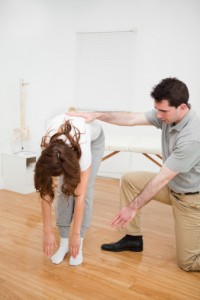
Scoliosis is a medical condition in which the spine is curved either front to back or side to side and is often rotated to one side or the other. It can occur at birth (congenitally), develop over time having no obvious cause, but often seen related to posture and growth (idiopathically) or due to an injury or the other condition (secondarily), such as cerebral palsy or muscular dystrophy.
The most common type is adolescent idiopathic scoliosis. It usually develops between the ages of 10 and 15, during periods of rapid growth. There are two kinds of curves, single or “C” curves and double or “S” curves. “C” curves are slightly more common than “S” curves. The curve can occur in the upper back (thoracic), lower back (lumbar), or a combination of both.
Who does it Affect?
Scoliosis affects approximately 2-3% of the population or 6 million people without regard to age or race. While it impacts a seemingly small portion of the population it can severely impact quality of life.
Prognosis
The prognosis is better if detected and treated early. Even mild or small curves can cause pain and decreased function if left untreated over time.
The Goal OF Physical Therapy
The main goal of physical therapy is to normalize the posture and motion of the spine and pelvis, as well as teach individuals to avoid the progression of scoliosis. Physical therapy can help restore the normal skeletal function need for unrestricted, pain-free physical activity and posture.
Common Signs & Symptoms
- Uneven shoulders
- Uneven hips
- Uneven waist
- Leaning to one side
- One more prominent shoulder blade
- Uneven spinal/back musculature
- Uneven breasts
- Uneven hemline
- Leg length difference
Treatment
Strength for necessary upright postures of daily life is essential. Sometimes it cannot be maintained due to a “growth spurt,” fatigue from daily postural demands or poor postural habits common among adolescents. We can analyze a patient’s history, habits and activities which may be contributing to their curvature and symptoms. Common findings include tightness and decreased motion and strength in the hips and pelvis, causing the lumbar spine to compensate with side bending and rotation. Treatment will include muscular re-educating techniques and manual techniques to restore motion, posture training, specific strengthening and home exercises.
